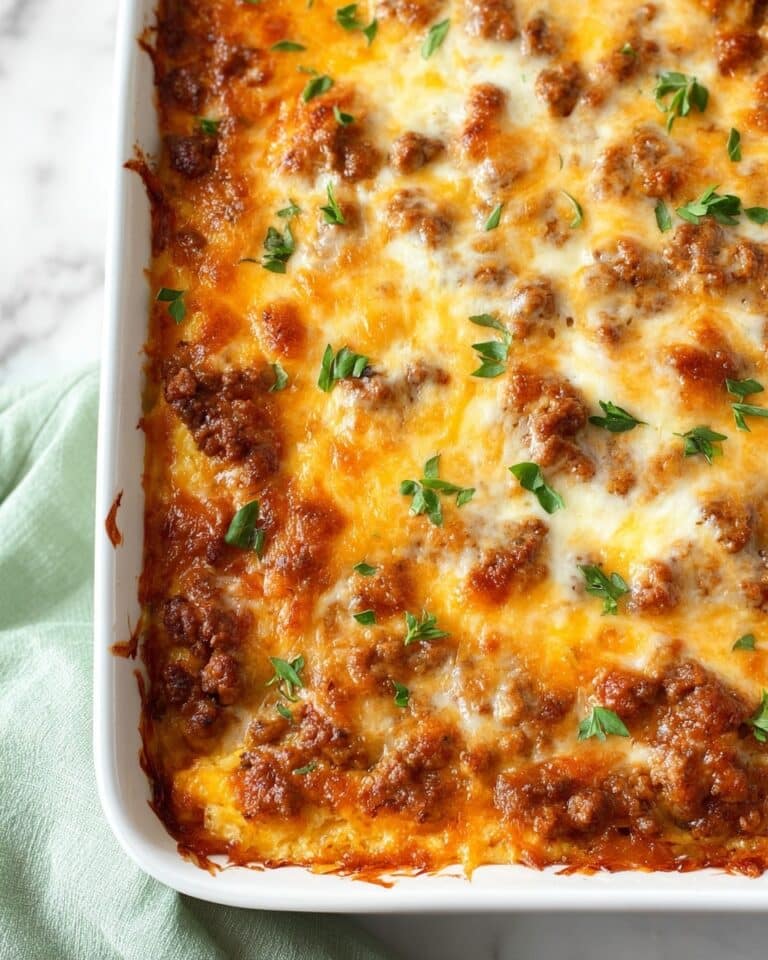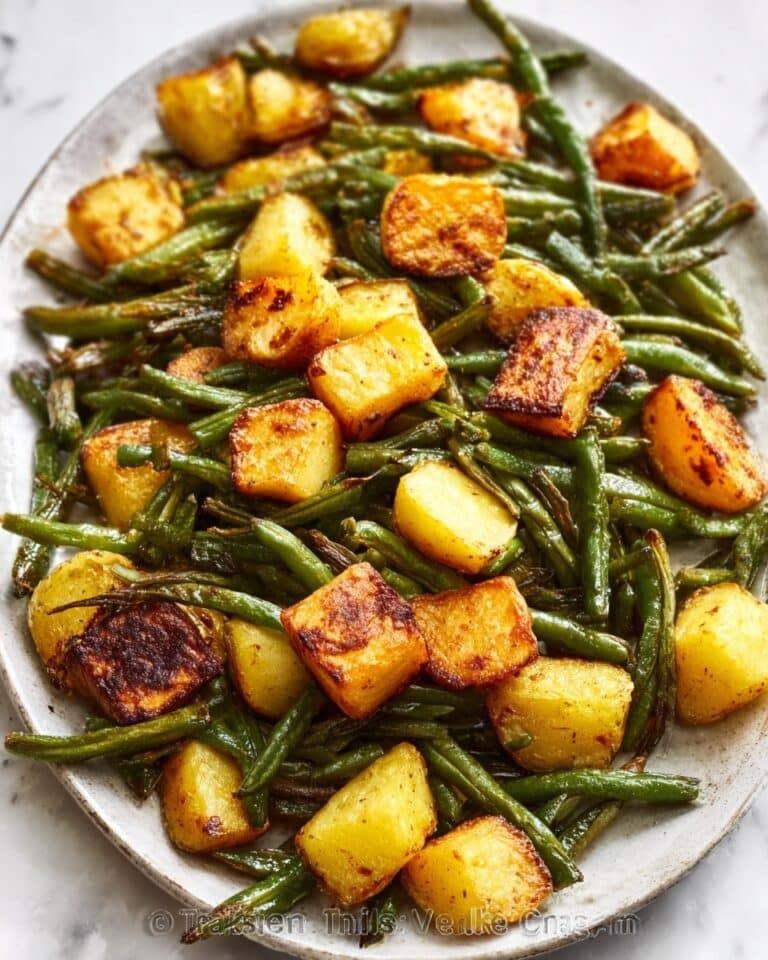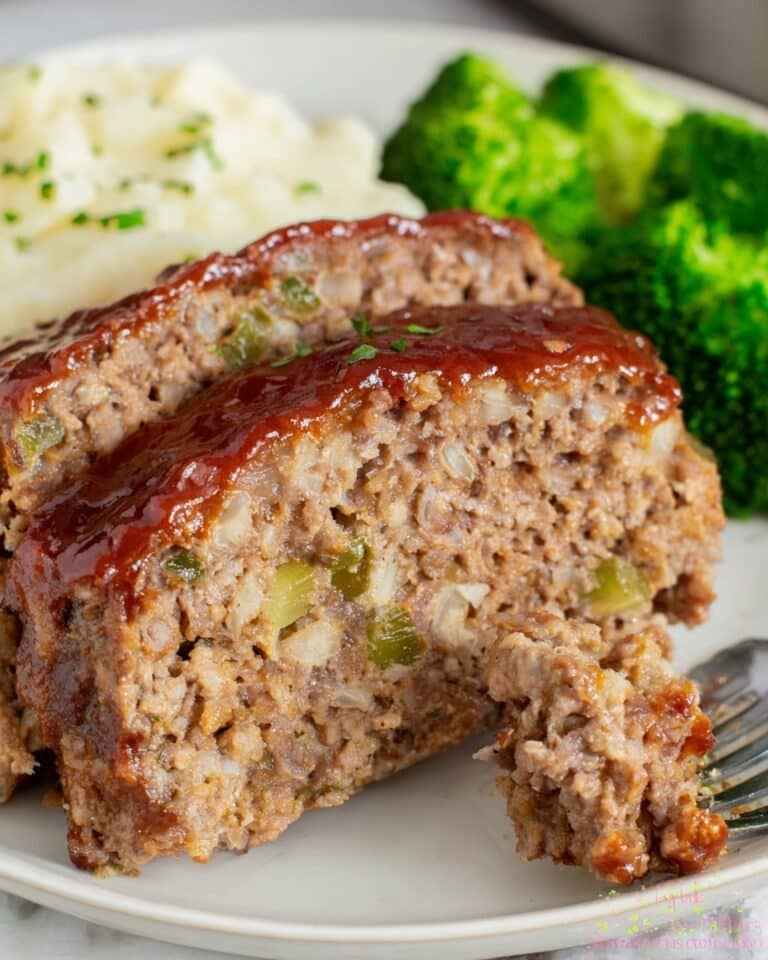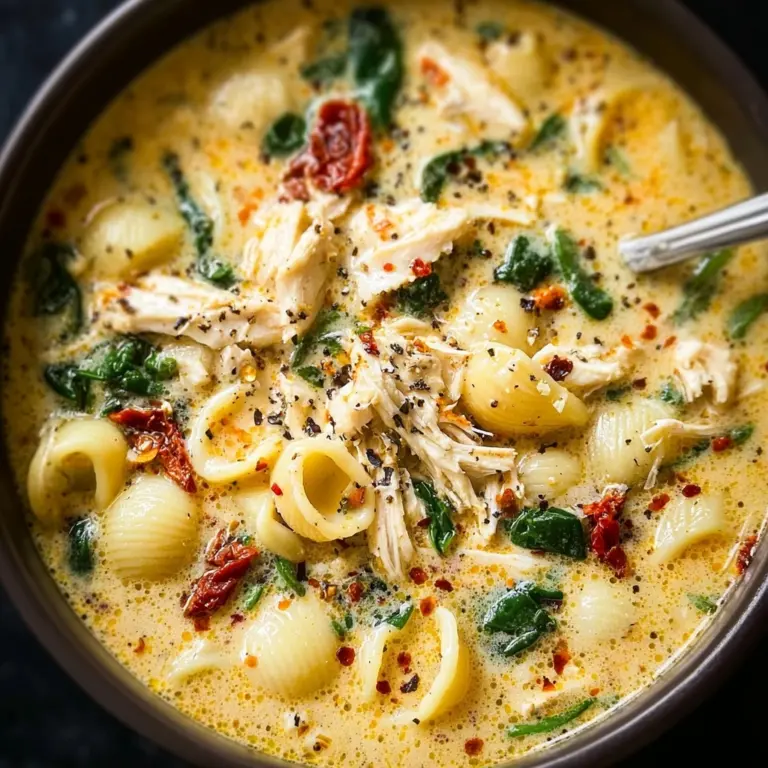Gramma’s Homemade White Bread Recipe
If you’ve ever yearned for that warm, nostalgic feeling of freshly baked bread wafting through the house, then you’re going to fall head over heels for Gramma’s Homemade White Bread. This recipe is a pure celebration of simple ingredients coming together to make a loaf that is soft on the inside, with a perfectly golden crust that invites you to tear it apart with your hands. The beauty of Gramma’s Homemade White Bread lies in its comforting familiarity—each bite is a reminder of cozy kitchens and family gatherings. Whether you’re a beginner baker or someone who loves bread-making as a weekend ritual, this recipe will make your home feel a little more like a warm hug.
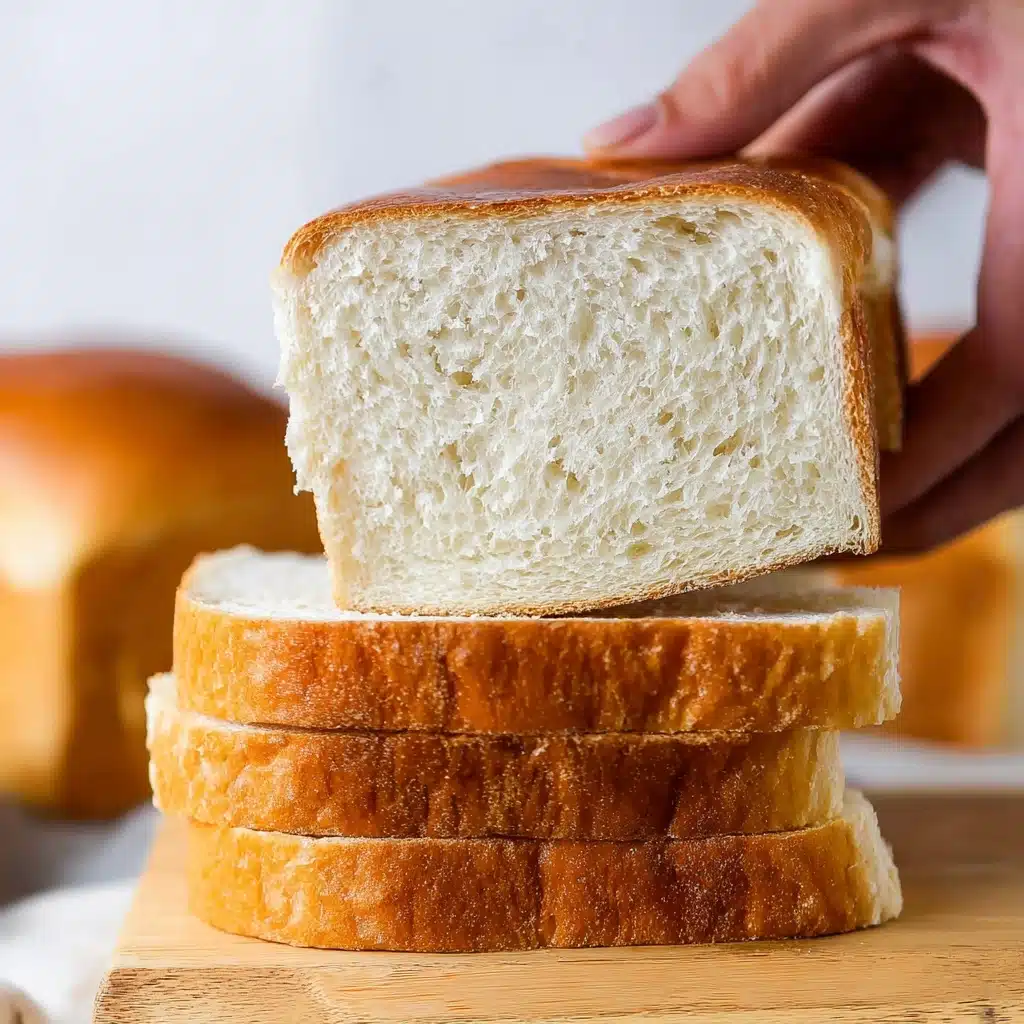
Ingredients You’ll Need
All you need for Gramma’s Homemade White Bread are a handful of pantry staples that work in harmony to create that tender crumb and golden crust. Each ingredient matters, adding flavor, texture, or the magic that turns simple dough into a loaf you’ll want to savor slice after slice.
- Lukewarm water: Activates the yeast and helps dissolve sugar and salt evenly.
- Granulated sugar: Feeds the yeast for that perfect rise and adds just a touch of sweetness.
- Canola oil: Keeps the bread soft and moist while enhancing the crumb.
- Salt: Balances the flavors and strengthens the dough’s gluten structure.
- All-purpose flour or white whole wheat flour: The foundation for the dough, providing the texture and body.
- Active dry yeast: The star that makes the bread rise beautifully and develop its airy texture.
How to Make Gramma’s Homemade White Bread
Step 1: Activate the Yeast
Start by mixing lukewarm water with sugar and yeast in a large bowl. It’s important the water isn’t too hot or too cold because yeast is a bit finicky. After a few minutes, you should see small bubbles forming on the surface—this is yeast waking up and getting ready to work its magic.
Step 2: Mix in the Ingredients
Next, stir in salt and canola oil to the yeast mixture. Begin by adding three cups of flour and mix thoroughly. Then gradually sprinkle in more flour, about half a cup at a time, until the dough thickens and resists mixing. This slow addition of flour helps ensure your dough doesn’t get too dense—one of the secrets to Gramma’s Homemade White Bread’s tender crumb.
Step 3: Knead the Dough
Turn your dough out onto a floured surface and knead it with care. This step is truly therapeutic—work the dough for about five minutes until it feels smooth, elastic, and no longer sticks to your hands. Kneading develops the gluten, giving your bread its signature structure and chew.
Step 4: Let the Dough Rise
Lightly spray your mixing bowl with cooking spray and return the dough inside. Cover with a clean dish towel and let it rest in a warm place for about an hour. This resting period allows the dough to double in size, filling your kitchen with that irresistible bread scent and ensuring a fluffy loaf.
Step 5: Shape and Second Rise
Once your dough has doubled, divide it in half. Prepare two bread pans by lightly spraying them with cooking spray. Gently shape each dough half and transfer them into the pans. Cover again with a clean cloth and let them rise for another hour—the anticipation builds as your bread nearly reaches perfection.
Step 6: Bake to Golden Perfection
While your dough completes its second rise, preheat the oven to a toasty 400 degrees Fahrenheit. Bake the bread for approximately 30 minutes until the tops turn a lovely golden brown. Keep an eye on the color, and if the crust browns too fast, tent it loosely with foil to prevent burning. Once out of the oven, transfer the loaves to a cooling rack and brush the tops lightly with butter to add a beautiful sheen and rich flavor only Gramma’s Homemade White Bread can deliver.
How to Serve Gramma’s Homemade White Bread

Garnishes
While this bread shines on its own, adding a pat of melting butter or a drizzle of honey can elevate your experience. Fresh herbs like rosemary or thyme sprinkled on warm slices bring an aromatic twist that complements the bread’s gentle sweetness beautifully.
Side Dishes
Gramma’s Homemade White Bread pairs delightfully with hearty soups, creamy chowders, or roasted vegetables. Its soft texture makes it ideal for mopping up sauces or creating the perfect base for an open-faced sandwich piled high with your favorite toppings.
Creative Ways to Present
For a casual brunch, slice this bread thick and toast it lightly before topping with smashed avocado and a sprinkle of red pepper flakes. You can also cube it to make homemade croutons or use it for French toast that has the perfect balance of fluffiness and structure. The possibilities are endless!
Make Ahead and Storage
Storing Leftovers
If you have any leftover Gramma’s Homemade White Bread, store it in a loosely sealed plastic bag at room temperature. It will stay fresh and soft for about two to three days—a perfect treat for sandwiches or toast.
Freezing
To keep your bread longer, slice it first, then wrap tightly in plastic wrap followed by foil or a freezer bag. Frozen Gramma’s Homemade White Bread can last for up to three months without losing its delightful texture or flavor.
Reheating
To refresh your bread, wrap the slices in foil, pop them in a preheated 350-degree oven for about 10 minutes, or toast them for a crispier finish. This little trick breathes new life into your bread, making every bite taste like it just came out of the oven.
FAQs
Can I use whole wheat flour instead of all-purpose flour?
Yes! Using white whole wheat flour adds a bit more fiber and a nuttier flavor while still keeping the texture tender. You might need to adjust the flour amount slightly since whole wheat flour can absorb more liquid.
How important is the water temperature for activating the yeast?
Very important! The water should be lukewarm—around 100 to 110 degrees Fahrenheit. Too hot can kill the yeast, and too cold won’t activate it properly, so aim for that warm, comfortable temperature to ensure a good rise.
Can I make this bread using a bread machine?
Absolutely! You can follow the same ingredient list, adding them in the order recommended for your machine. Just select the basic white bread setting and watch the magic unfold with a bit less hands-on time.
Why does the bread sometimes turn out dense?
This usually happens if the dough doesn’t rise enough or if too much flour is added. Make sure to allow ample rising time and add flour gradually. The dough should be a bit sticky but manageable before kneading.
Can I add herbs or seeds to the dough?
Definitely! Adding herbs like rosemary or thyme or seeds like sesame or poppy on top before baking can add delightful flavor and texture. Just mix the herbs into the dough gently or sprinkle seeds on top before the oven.
Final Thoughts
Baking Gramma’s Homemade White Bread is more than just a recipe—it’s an experience that fills your kitchen with warmth and invites you to slow down and savor simple, wholesome ingredients. I encourage you to give this classic loaf a try and watch how it becomes a beloved staple in your own home, just like it was in Gramma’s. There’s nothing quite like the joy of pulling a warm loaf from the oven and sharing it with those you love.
Print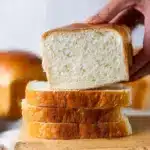
Gramma’s Homemade White Bread Recipe
- Total Time: 2 hours 45 minutes
- Yield: 2 loaves 1x
- Diet: Vegetarian
Description
Gramma’s Homemade White Bread is a classic, soft, and golden loaf made from scratch using simple ingredients and traditional techniques. This recipe yields two delicious loaves perfect for sandwiches, toast, or enjoying fresh with butter. The bread is tender with a slightly crisp crust, ideal for everyday use or special family meals.
Ingredients
Wet Ingredients
- 2 cups lukewarm water
- 1 heaping tablespoon granulated sugar
- 1 tablespoon canola oil
Dry Ingredients
- 4 to 5 cups all-purpose flour or white whole wheat flour
- 1½ teaspoons salt
- 2¼ teaspoons active dry yeast (one packet)
Instructions
- Activate Yeast: In a large mixing bowl, combine lukewarm water, granulated sugar, and active dry yeast. Stir gently and wait for small bubbles or foam to form on the surface, which indicates that the yeast is active and ready to use.
- Add Salt, Oil, and Flour: Mix in salt and canola oil. Stir in the first 3 cups of flour, then gradually incorporate additional flour, about ½ cup at a time, until the dough becomes thick and difficult to mix. Typically, about 5 cups of flour are needed to reach the right consistency.
- Knead the Dough: Transfer the dough onto a floured surface and knead it for approximately 5 minutes until it becomes smooth, elastic, and no longer sticks to your hands.
- First Rise: Lightly mist the mixing bowl with cooking spray and place the dough back inside. Cover the bowl with a clean dishcloth and let it rise in a warm place for 1 hour or until doubled in size.
- Shape and Second Rise: Divide the risen dough into two equal parts. Lightly mist two bread pans with cooking spray and shape each portion into a loaf. Place them in the pans, cover with a clean dishcloth, and allow to rise for another hour.
- Bake the Bread: Preheat the oven to 400°F during the last 10 minutes of the second rise. Bake the loaves for 30 minutes or until the tops are lightly golden. If browning too quickly, tent with foil to prevent burning.
- Cool and Finish: Remove the bread from the oven and transfer to a cooling rack. While still warm, lightly coat the tops with butter for a soft, flavorful crust. Let cool before slicing and serving.
Notes
- Use lukewarm water (around 105°F-110°F) to properly activate the yeast without killing it.
- The dough consistency will vary depending on the flour; adjust flour quantity gradually to avoid a dry dough.
- Allow proper rising times for a light, airy texture.
- Lightly greasing pans prevents sticking and helps form a crisp crust.
- Butter on top after baking adds moisture and flavor but can be omitted for dairy-free variations.
- Store bread in an airtight container or bread box to maintain freshness for up to 3 days.
- Freezing the bread extends shelf life; thaw at room temperature before use.
- Prep Time: 15 minutes
- Cook Time: 30 minutes
- Category: Bread
- Method: Baking
- Cuisine: American
Nutrition
- Serving Size: 1 slice (1/16 of a loaf, approx. 45g)
- Calories: 120
- Sugar: 2 g
- Sodium: 180 mg
- Fat: 1.5 g
- Saturated Fat: 0.2 g
- Unsaturated Fat: 1.3 g
- Trans Fat: 0 g
- Carbohydrates: 23 g
- Fiber: 1 g
- Protein: 4 g
- Cholesterol: 0 mg
Keywords: homemade white bread, simple bread recipe, yeast bread, soft bread loaf, classic sandwich bread

